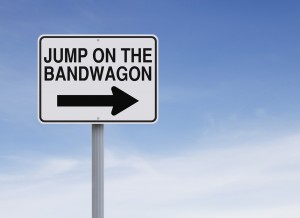 If your “to-do” list includes “increase the impact of our giving” read on! Below are five grantmaking mistakes you should avoid.
If your “to-do” list includes “increase the impact of our giving” read on! Below are five grantmaking mistakes you should avoid.
1) Jumping on the latest philanthropy craze. Every year a new set of tools and ideas emerge that become the hot trends (think infographics, collective impact, Ice Bucket Challenge, crowd funding, social media) and grantmakers feel compelled to try them out. I had a grantmaker recently tell me that her foundation decided they “need to do crowd funding” and therefore the new initiative she wanted me to help her design “must include crowd funding” but she wasn’t even sure what that meant. Crowd funding can be a great tool, depending upon what you are trying to accomplish. But this foundation was forcing it onto its grantmaking, with no appreciation for whether it was a good fit.
When confronted with the latest philanthropic craze, take the time to understand it and see what it has to offer. But then ask yourself these four questions. What is our goal? What is our strategy? What is the best way to get there? Will this tool help?
2) Only giving one grant per nonprofit, no matter how much impact they have, in order to spread funds to all the nonprofits in your area. That is the belief of one family foundation, which refuses to ever give a second grant to a nonprofit.
It’s noble to want to help many causes. But at the end of the day what do your grants amount to? Nothing comes of the grantee-funder relationship that develops, the nonprofit is left in the same position as before your grant, and as the funder you aren’t achieving impact in any area.
3) Leaving your funding partners in the lurch. It takes sustained effort for foundations to develop and maintain successful funding partnerships with each other. Rarely do these involve formal arrangements such as MOUs; it is far more common for the partnerships to be forged on trust and verbal agreements. Breaking that trust can lead to serious ramifications that reach far beyond the activity at hand. One corporate funder of a local collaborative agreed for weeks to jointly pay the costs of a seasoned consultant to quickly plan a critical, time-sensitive event. She balked at the cost ($5,000) and backed out at the last minute, forcing the other foundations to scramble and their nonprofit partner to donate part of their grant to cover the costs.
If you decide to partner with other funders, recognize the hard work and strategic maneuvering they have contributed and reward them by being a partner they can depend on. You might not agree with every decision and every dollar, but if you focus on the big picture you can avoid alienating your most important allies.
4) Giving yourself five months to prepare a Request for Proposals (RFP), but giving the applicants three weeks to apply. This is a very common mistake, and five months is being generous (it’s often 10 or 12). Frequently, the funders’ own lack of time management leads to the compressed timeline for grantees, putting the squeeze on the very organizations that help funders achieve their missions.
If it takes you that long to summarize what you want to accomplish with your funding strategy and outline your funding guidelines, imagine how long it will take nonprofits to respond. You need to make two changes immediately: (1) reduce your internal bureaucracy and decision-making time, and (2) be kinder to your grantseekers by providing a more realistic timeline that allows them to prepare a well-research and thoughtful response.
5) Hiring a more expensive consultant simply because she charges more. I was once told by a program officer of a health foundation: “We we decided to go with the more expensive consultant. She thinks this project will take longer to do (more hours) so we think she must know something that you don’t.” (This despite the fact I had done this project before and knew exactly what was involved, and my lower fee was a fixed price!).
Consultants who take longer to accomplish your objectives aren’t necessarily better – perhaps they are just slower! Don’t confuse expense with expertise.
I can’t make this stuff up! Grantmaking isn’t easy, but it does require common sense. If you created a policy five years ago that is no longer applicable or hinders your work, change it. If you want to make a difference, develop a grantmaking strategy that rewards impact and accomplishment, not mere existence. And if you want to be part of effective partnerships, then be an effective partner.
Kris Putnam-Walkerly, MSW, is a national philanthropy expert and consultant on foundation strategy and grantmaking practice. For more free resources on effective grantmaking, read “5 Grantmaking Challenges You Will Experience, and How To Avoid Them” and “Supercharge Your Grantmaking Strategy: 7 Ways To Get The Biggest Bang for Your Bucks.”
© 2015 Kris Putnam-Walkerly. All rights reserved. Permission granted to excerpt or reprint with attribution






